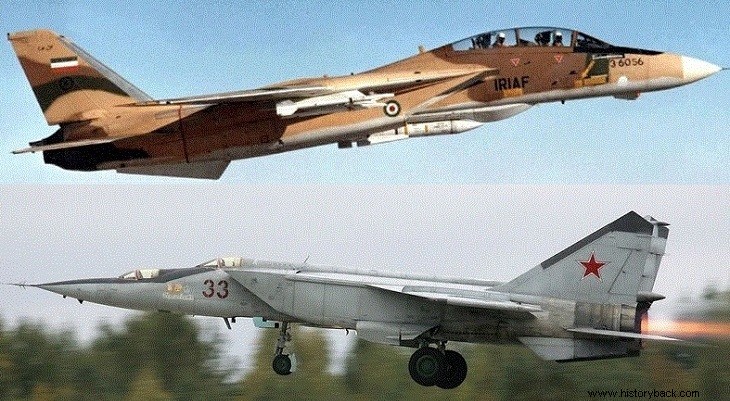
The Iraqi air force received, in 1980, 12 MiG-25P fighters, 12 MiG-25R reconnaissance and six MiG-25PU trainers. However, these aircraft belonged to export versions and were inferior to the Soviet ones. Iraq demanded and won the aircraft upgrade.
Iraqi MiG-25s first flew over Iran in May 1982. However there are sources that state that the first collision between the two types and the first downed MiG-25 occurred on 7 September 1980, before the official start of the war.
A series of flights deep into the Iranian hinterland followed that forced the Iranians to bring their best aircraft, the F-14 Tomcats, into the fray. However, intercepting the fast MiG-25s was not easy. And the fact that the Iraqis had information from Iranian insiders about Iranian air defenses didn't help at all.
Gradually, however, the Iranians found ways. On September 16, 1982 Iranian pilot Saram Rostami shot down an Iraqi Foxbat in the Persian Gulf. On December 1, he scored a second success. While patrolling Persikos, Ensign Rostami was informed that he was approaching an enemy aircraft at an altitude of 70,000 feet at a speed of nearly Mach 2.5.
Accelerating using the afterburner and gaining altitude, Rostami reached a height of 40,000 feet. When the two aircraft were 40 miles apart the F-14 fired an AIM-54A Phoenix missile. Moments later the missile hit the MiG-25 turning it into a ball of fire.
The pilot of the Iraqi MiG-25R was Abdullah Faraz Mohamed, who perished along with his aircraft. On December 4, Ensign Toufanian pursued two Iraqi MiG-25PDs, shooting one down with an AIM-54 missile. However, the period August 1983 – July 1985 was dead in terms of MiG-25 downs by F-14s. On July 3, 1985 there was another shooting down. Another one took place on February 15, 1986.
Later the Soviets gave Iraq MiG-25BM 'wild Wessel' – air defense suppression aircraft. One of them was shot down by an F-14. In November 1987 four more were given. The aircraft were accompanied by Soviet advisers and technicians, and were equipped with AS-11 "Kilter" and AS-12 "Karen" anti-radar missiles (Kh-58U and Kh-25MP respectively).
The Soviets' purpose was to test the MiG-28BM's electronic countermeasures against the F-14 and the effectiveness of the AS-11 missiles. On November 8 and 9 the aircraft, flying with Soviet pilots, managed to destroy Iranian radars. On their third mission, however, on November 11, a MiG-25BM was severely damaged by an AIM-54 missile, which found its target despite Soviet electronic countermeasures.
Although the warhead did not explode, the missile hit the aircraft, severely damaging it, forcing the pilot to perform an emergency landing in which the MiG-25BM was completely destroyed. In full view of American satellites, the Soviets recovered the MiG's carcass.
In July 1988 the Soviets again used these aircraft successfully, destroying an Iranian radar site. However, the great fear and invincible enemy was the AWG-9 radar of the F-14 which the French and Soviets tried to neutralize with their best electronic countermeasures but without success.
This happened with the AIM-54A Phoenix missile that proved to be "unmoved" by enemy countermeasures. In the latter stages of the war, as the Iraqis carried out massive raids. Another MiG-25RB was lost in one of them. But two were lost in March 1988.
In total, at least 12 MiG-25s were shot down by Iranian F-14s during the war. MiG-25s were often flown by Soviet and East German pilots.
